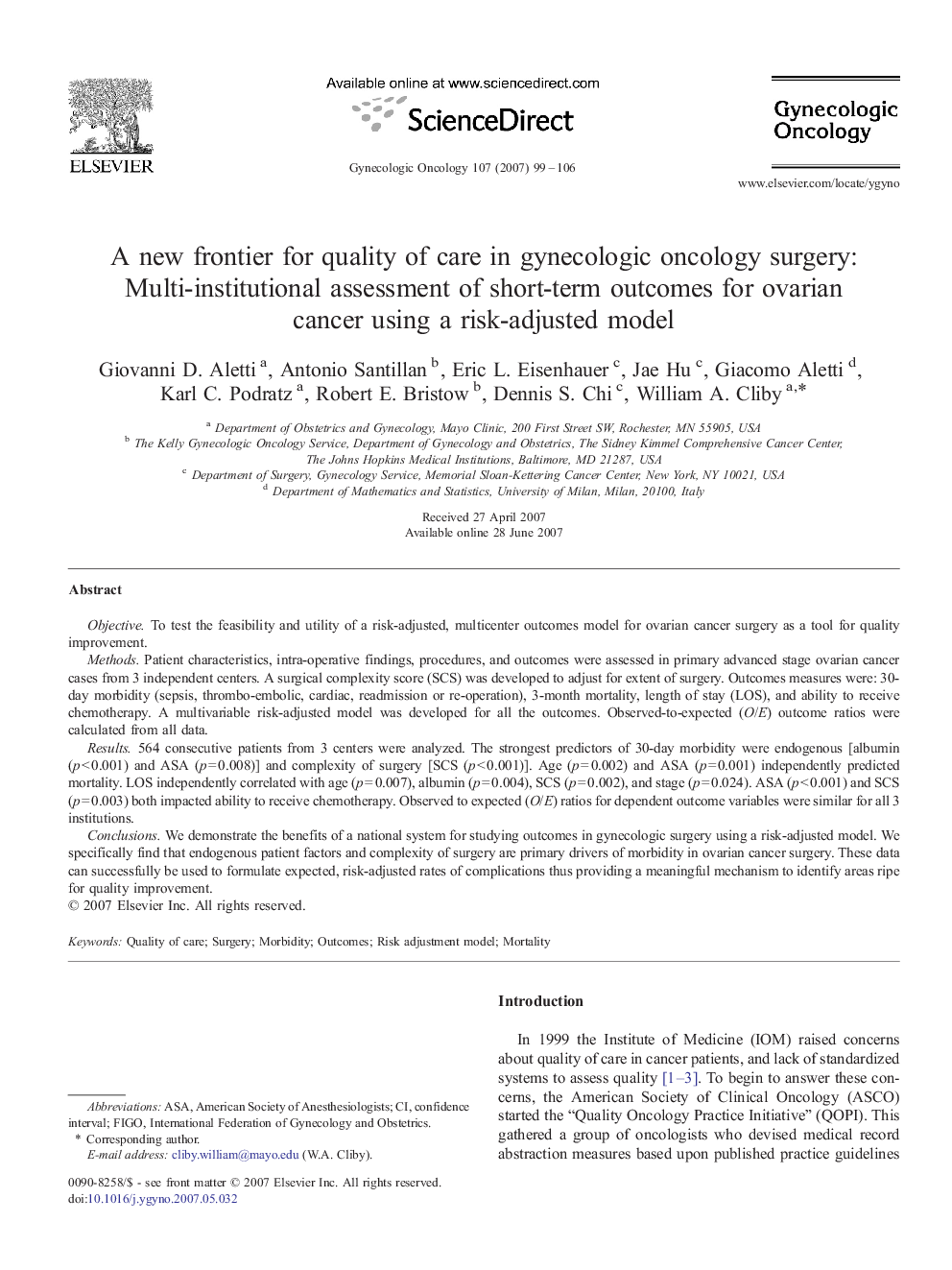| Article ID | Journal | Published Year | Pages | File Type |
|---|---|---|---|---|
| 3946269 | Gynecologic Oncology | 2007 | 8 Pages |
ObjectiveTo test the feasibility and utility of a risk-adjusted, multicenter outcomes model for ovarian cancer surgery as a tool for quality improvement.MethodsPatient characteristics, intra-operative findings, procedures, and outcomes were assessed in primary advanced stage ovarian cancer cases from 3 independent centers. A surgical complexity score (SCS) was developed to adjust for extent of surgery. Outcomes measures were: 30-day morbidity (sepsis, thrombo-embolic, cardiac, readmission or re-operation), 3-month mortality, length of stay (LOS), and ability to receive chemotherapy. A multivariable risk-adjusted model was developed for all the outcomes. Observed-to-expected (O/E) outcome ratios were calculated from all data.Results564 consecutive patients from 3 centers were analyzed. The strongest predictors of 30-day morbidity were endogenous [albumin (p < 0.001) and ASA (p = 0.008)] and complexity of surgery [SCS (p < 0.001)]. Age (p = 0.002) and ASA (p = 0.001) independently predicted mortality. LOS independently correlated with age (p = 0.007), albumin (p = 0.004), SCS (p = 0.002), and stage (p = 0.024). ASA (p < 0.001) and SCS (p = 0.003) both impacted ability to receive chemotherapy. Observed to expected (O/E) ratios for dependent outcome variables were similar for all 3 institutions.ConclusionsWe demonstrate the benefits of a national system for studying outcomes in gynecologic surgery using a risk-adjusted model. We specifically find that endogenous patient factors and complexity of surgery are primary drivers of morbidity in ovarian cancer surgery. These data can successfully be used to formulate expected, risk-adjusted rates of complications thus providing a meaningful mechanism to identify areas ripe for quality improvement.
